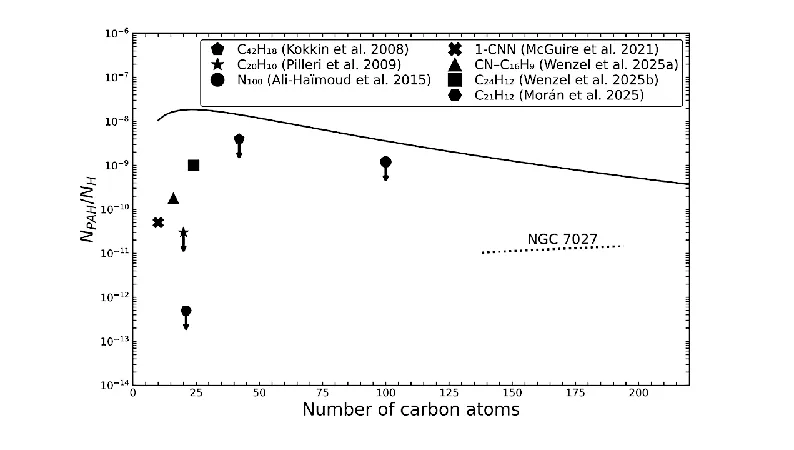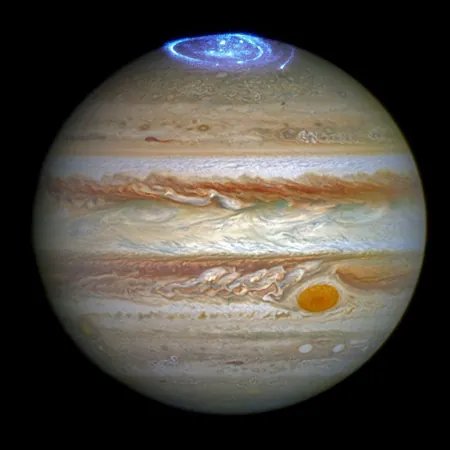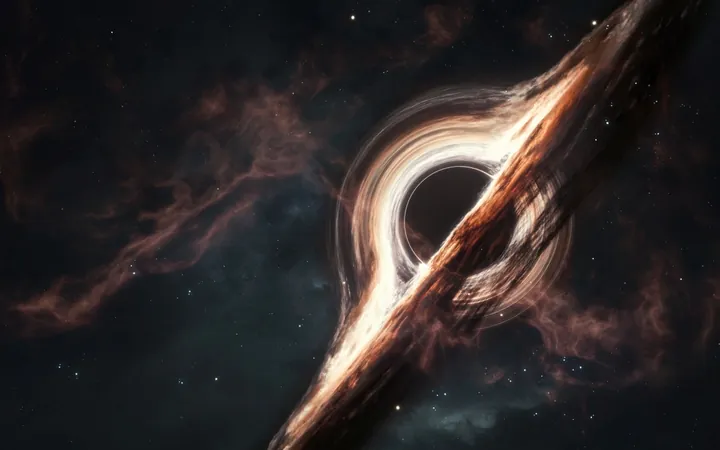
Are Large Polycyclic Aromatic Hydrocarbons Really Missing from Our Universe?
2025-08-24
Author: Jacob
The Cosmic Quest for Giant Molecules
In the vast expanse of the universe, the search for large polycyclic aromatic hydrocarbons (PAHs)—molecules boasting over 100 carbon atoms—has taken center stage. These massive compounds are key to deciphering the mystery behind unidentified infrared emission (UIE) bands that light up nebulae and the interstellar medium. Despite being commonly observed, the true origin of these emissions has baffled scientists for decades.
High-Tech Hunting with FAST
Utilizing the cutting-edge Five-hundred-meter Aperture Spherical Radio Telescope (FAST)—the world’s most sensitive tool for capturing decimeter-wavelength signals—researchers embarked on a bold mission to discover the elusive large PAHs. They focused on two prominent UIE sources, NGC 7027 and TMC-1, and included IRC+10216, a non-UIE source for comparison.
Amplifying the Search
Employing a sophisticated matched filter technique, scientists aimed to isolate unique spectral signatures from quasi-symmetric PAHs containing between 138 and 194 carbon atoms. This innovative approach significantly improved their chances of detecting these crucial molecular markers. Yet, despite their efforts, no definitive features surfaced.
Are We Underestimating the Universe's Chemistry?
The study did, however, yield upper limits on the abundance of these large PAHs, which fell short of theoretical predictions. This intriguing finding raises questions: Could it mean that giant PAHs aren't the main contributors to UIE bands? While this conclusion is enticing, researchers advise caution—it's built on simplifying assumptions that lack empirical backing.
A Universe Full of Mysteries Awaiting Discovery
As scientists continue to unravel the chemical complexities of our universe, the quest for large PAHs is crucial not only for understanding UIE bands but for grasping the fundamental processes that govern cosmic chemistry. The ongoing research exemplifies the thrilling nature of discovery in astronomy, where each finding opens the door to more questions and future explorations.









 Brasil (PT)
Brasil (PT)
 Canada (EN)
Canada (EN)
 Chile (ES)
Chile (ES)
 Česko (CS)
Česko (CS)
 대한민국 (KO)
대한민국 (KO)
 España (ES)
España (ES)
 France (FR)
France (FR)
 Hong Kong (EN)
Hong Kong (EN)
 Italia (IT)
Italia (IT)
 日本 (JA)
日本 (JA)
 Magyarország (HU)
Magyarország (HU)
 Norge (NO)
Norge (NO)
 Polska (PL)
Polska (PL)
 Schweiz (DE)
Schweiz (DE)
 Singapore (EN)
Singapore (EN)
 Sverige (SV)
Sverige (SV)
 Suomi (FI)
Suomi (FI)
 Türkiye (TR)
Türkiye (TR)
 الإمارات العربية المتحدة (AR)
الإمارات العربية المتحدة (AR)